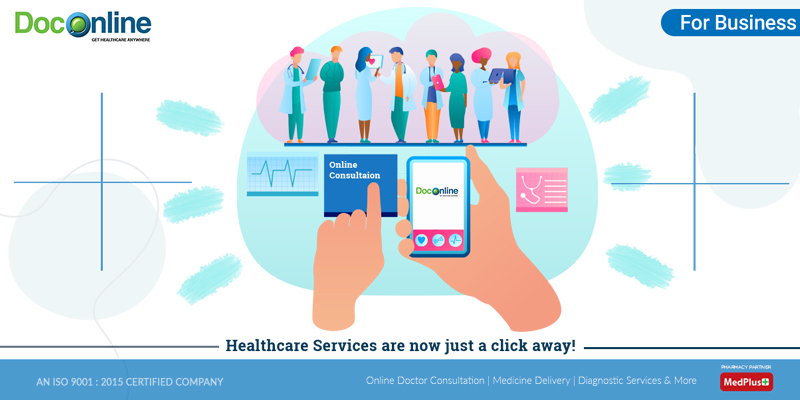A Comprehensive Overview to Subscription Based Healthcare: What You Required to Know
A Comprehensive Overview to Subscription Based Healthcare: What You Required to Know
Blog Article
Exactly How Subscription-Based Healthcare Is Revolutionizing the Medical Sector

The Rise of Subscription Healthcare
In the last few years, the medical care market has experienced a considerable shift towards subscription-based models, mirroring wider consumer trends favoring benefit and predictability. This change is driven by the raising need for even more individualized and obtainable treatment solutions. Registration health care, sometimes referred to as concierge medicine or straight health care, provides clients a fixed monthly cost for a variety of medical services, dramatically modifying traditional fee-for-service models.
The increase of membership medical care is facilitated by innovations in technology, which make it possible for streamlined interaction in between clients and providers - subscription based healthcare. Digital systems and telehealth solutions have actually ended up being essential, offering patients the ability to arrange appointments, access clinical documents, and obtain assessments online. This technical integration not just boosts person interaction but also permits service providers to deliver extra effective care
Moreover, the registration design lines up with the developing assumptions of people who look for even more control over their medical care costs and experiences. By eliminating the changability of co-pays and insurance cases, subscription-based health care provides a clear and simple approach. While this model is getting traction, its expansion encounters difficulties such as regulative hurdles and the need for more comprehensive acceptance within the traditional healthcare ecological community. Its expanding presence marks a crucial moment in the development of health care delivery.
Advantages for Providers and patients
Subscription-based medical care supplies a multitude of advantages for both companies and clients, reshaping the characteristics of clinical care. For people, this design offers improved access to health care services. With a foreseeable month-to-month fee, individuals can take pleasure in limitless consultations, reduced delay times, and customized care. This setup usually brings about an extra aggressive approach to wellness monitoring, permitting prompt interventions that can stop persistent problems from rising. Moreover, the financial transparency of membership versions lowers the unpredictability related to traditional fee-for-service billing, reducing the burden of unanticipated medical expenses.
For doctor, subscription-based models cultivate a more sustainable and gratifying method. By safeguarding a steady revenue stream, suppliers can concentrate on delivering high-grade treatment without the pressure of volume-based service. This version urges longer person appointments, promoting more powerful patient-provider partnerships and boosting health and wellness outcomes. In addition, it provides suppliers the flexibility to introduce and incorporate alternative and preventative care techniques. Administrative jobs are usually structured, lowering above prices and permitting carriers to devote even more time to patient interaction. On the whole, subscription-based medical care straightens the incentives of service providers and clients, promoting a more patient-centered and efficient healthcare delivery system.
Key Functions of the Design
Frequently, the essential features of the subscription-based healthcare model emphasize its unique technique to supplying medical services. Central to this model is the idea of foreseeable, month-to-month payments, offering people an extensive variety of solutions without the changability of conventional fee-for-service structures. This version commonly includes unlimited accessibility to medical care solutions, preventative care, and routine exams, making sure that clients can involve with their health care service providers proactively as opposed to reactively.
Furthermore, straight communication channels, such as telemedicine and messaging platforms, are highlighted, enabling people to receive timely recommendations and consultations without requiring in-person appointments. This enhances ease of access and benefit, specifically for people with flexibility restraints or those living in remote locations. The version also fosters more powerful doctor-patient relationships, as healthcare service providers are incentivized to concentrate on lasting check wellness results rather than short-term check outs.
Moreover, subscription-based healthcare frequently integrates technological innovations, such as digital health and wellness documents and wellness tracking applications, to give customized and effective treatment. People take advantage of coordinated and constant care administration, which is tailored to their certain health requirements. Eventually, these attributes jointly develop a patient-centered health care experience, prioritizing ease of access, price transparency, and preventative treatment.

Challenges and Considerations
While the subscription-based healthcare version offers numerous benefits, it is not without its obstacles and factors to consider. Membership models might accidentally favor those with greater socioeconomic status, potentially broadening differences in health care accessibility for lower-income individuals who may have a hard time with regular monthly fees.
One more difficulty lies in governing conformity. Subscription-based medical care should browse a complicated web of laws that differ by region, consisting of problems around individual confidentiality, information defense, and state licensing needs. Ensuring conformity without restraining the design's adaptability and technology can be daunting for providers.
In addition, there is the risk of overutilization or underutilization of solutions. Patients paying a repaired cost might overuse services, causing increased functional costs, while others might underutilize because of fear of straining the system, potentially ignoring required care.
Future Prospects and Innovations
The landscape of subscription-based healthcare is poised for change through emerging innovations and advancing prospects. As innovation continues to advance, the integration of expert system and equipment understanding presents significant chances to boost analysis precision and simplify individual administration. Predictive analytics can change preventive care by recognizing prospective health dangers before they manifest, thereby minimizing both expenses and the worry on health care systems.
Moreover, telemedicine is set to broaden within subscription models, offering people boosted accessibility to health care professionals no matter geographical restraints. This not only facilitates continuity of care yet likewise empowers patients to engage more proactively in their health and wellness management. Furthermore, blockchain technology supplies prospective in safeguarding client data and making sure interoperability throughout systems, promoting trust fund and openness.
The advancement of individualized medicine is one more frontier, with registration models giving a special structure for delivering tailored health solutions. Genetic screening and personalized therapy plans can be effortlessly incorporated, aligning person needs with details clinical interventions. Collaborations in between tech firms and healthcare suppliers are likely to generate cutting-edge remedies, improving person experiences and results. As these prospects emerge, subscription-based healthcare has the prospective to redefine how care is delivered and accessed.
Conclusion
Subscription-based medical care is changing the medical sector by offering an extra accessible, predictable, and patient-centered technique to clinical services. This version enhances patient-provider connections, guarantees economic transparency, and emphasizes precautionary care through endless examinations and telemedicine. In spite of challenges such as regulatory hurdles and possible disparities in gain access to, the subscription version holds promise for an extra individualized and effective medical care experience. As technology breakthroughs, additionally technologies are likely to resolve existing challenges and optimize healthcare distribution.
Subscription health care, in some cases referred to as concierge medicine or direct primary care, uses patients a fixed monthly cost for a variety of clinical solutions, significantly modifying conventional fee-for-service designs.
Moreover, description the membership model aligns with the developing expectations of clients who seek even more control over their healthcare costs and experiences. For people, this version offers web link enhanced access to medical care solutions. On the whole, subscription-based health care lines up the motivations of clients and providers, promoting an extra patient-centered and reliable health care delivery system.
Additionally, telemedicine is established to broaden within membership designs, offering individuals boosted access to medical care specialists regardless of geographical constraints. - subscription based healthcare
Report this page